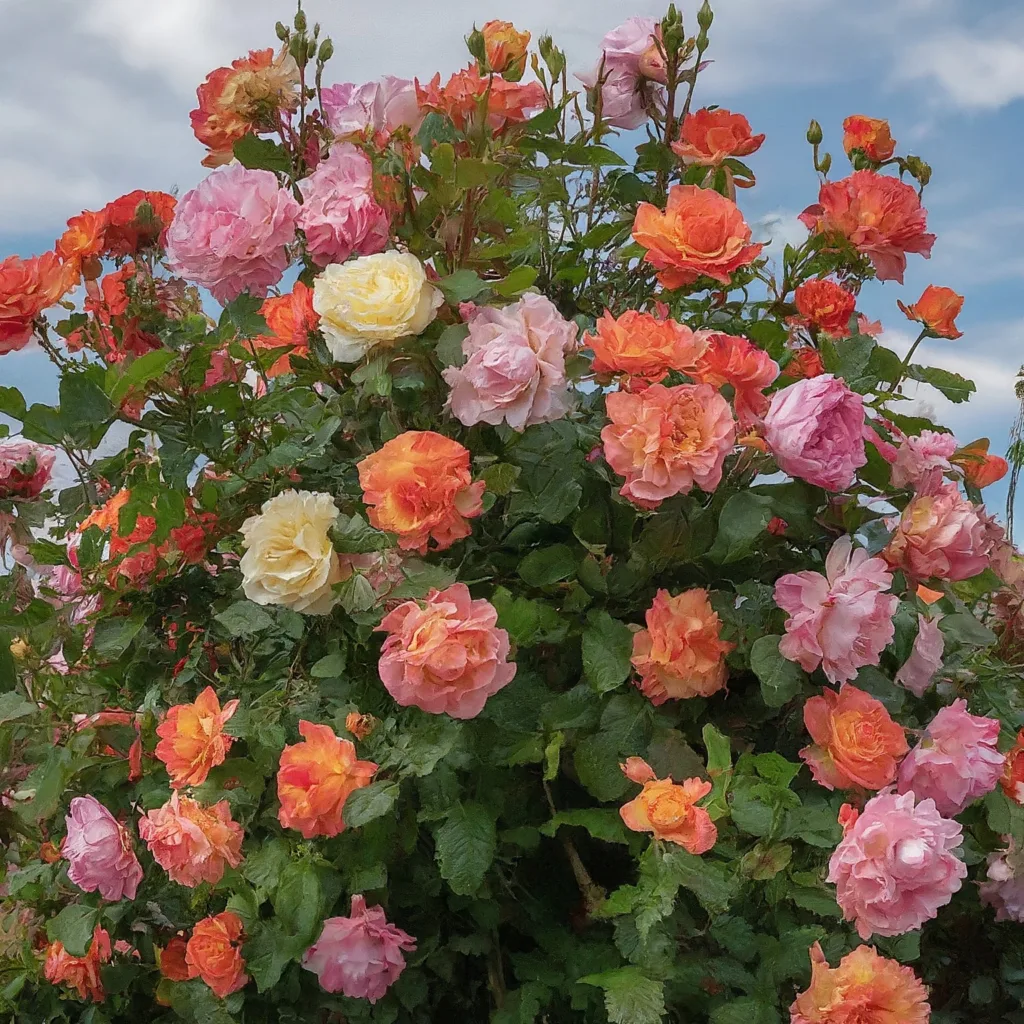ROSE BUSHES
Rose bushes have captivated hearts for centuries with their intoxicating fragrance, stunning blooms, and symbolic meaning. Their diverse range of colors, shapes, and sizes makes them a versatile addition to any landscape, offering a touch of elegance and romance. Whether you’re a seasoned gardener or just starting out, rose bushes offer endless possibilities to enhance your outdoor space.

What You Need To Know:
- Specimen planting: Showcase a single, stunning rose bush as a focal point.
- Hedge planting: Create a fragrant and colorful privacy hedge with repeat-blooming varieties.
- Border planting: Add pops of color and fragrance to walkways and borders.
- Climbing roses: Train them to climb trellises, arbors, or walls for a vertical display.
Specifications
- Lifespan: Varies depending on variety and care, but generally 10-25 years.
- Canopy Size/Spread: 2-8 feet tall and wide, depending on the type (miniature, floribunda, hybrid tea, etc.)
- Root Characteristics: Non-invasive, deep taproot system with some spreading lateral roots. Not a threat to foundations with proper placement (at least 3 feet away from structures).
- Growth Rate: Moderate, around 1-2 feet per year.
- Edible Characteristics: Rose hips can be used to make jams, jellies, and teas, but remove the seeds as they can be irritating.
Growing Conditions
- Soil: Prefers well-draining, fertile soil with slightly acidic pH (6.0-6.7).
- Water: Consistent watering, especially during the first year and hot weather. Allow the soil to dry slightly between waterings.
- Light: Full sun (at least 6 hours daily) is ideal for best blooming.
- Hardiness Zone: Varies depending on the variety, but most popular types fall within USDA Zones 4-9.
Interesting Facts
- The rose fossil record dates back over 35 million years!
- Roses come in a vast array of colors, except for true blue. Breeders are still working on achieving that elusive shade.
- Rose hips, the fruit of the rose bush, are a rich source of vitamin C.
- oses have been cultivated for over 2,000 years, used for everything from medicine and perfume to food and religious symbolism.
- Rosewater, an extract from rose petals, is still used in Middle Eastern cooking and cosmetics today.
- Specimen planting: Showcase a single, stunning rose bush as a focal point.
- Hedge planting: Create a fragrant and colorful privacy hedge with repeat-blooming varieties.
- Border planting: Add pops of color and fragrance to walkways and borders.
- Climbing roses: Train them to climb trellises, arbors, or walls for a vertical display.
Interested In Adding This Unique Tree To Your Property?
Contact Edmonton Arborist and our expert tree planting team will bring and install your very own Roses!




